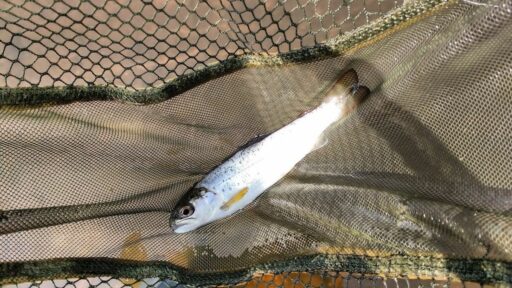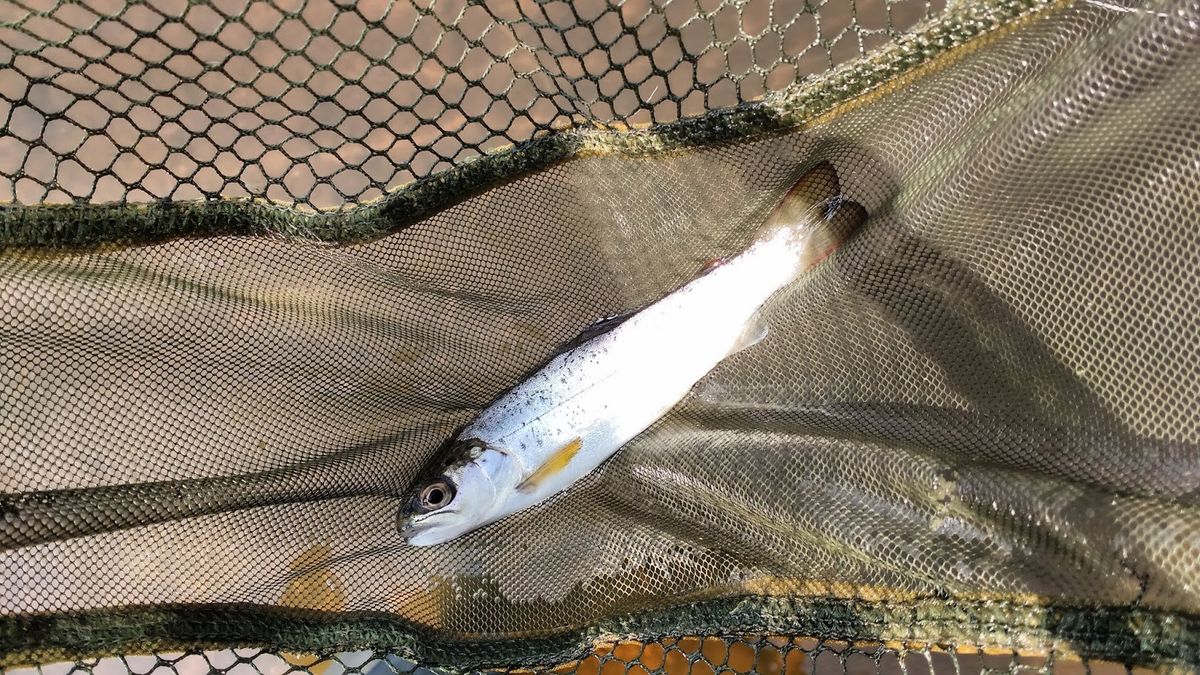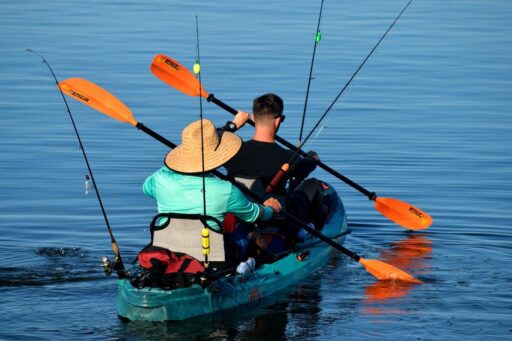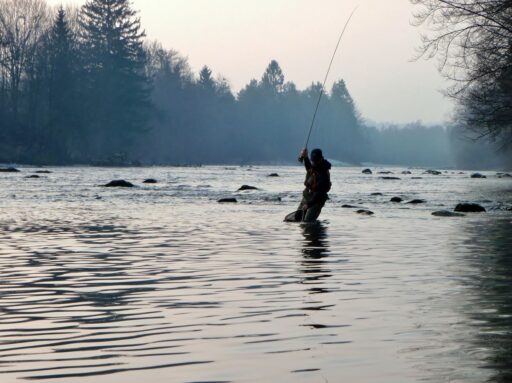Kayak fishing combines the thrill of angling with the adventure of paddling, but the key to a successful experience lies in choosing the right equipment. The ultimate guide to selecting kayak fishing rods is designed to help both novice and seasoned anglers make informed decisions about their gear. From understanding the nuances of rod selection to pairing the perfect reel, and even gearing up with essential accessories, this guide covers all the bases to ensure your time on the water is both enjoyable and fruitful.
Key Takeaways
- The selection of a fishing rod for kayak angling should prioritize rod length and weight for maneuverability and comfort.
- Material and construction of rods are crucial for durability and performance; look for quality composites or graphite.
- Understanding rod power and action is essential for targeting specific fish species and ensuring proper bait presentation.
- A balanced rod and reel combo enhances casting accuracy and control, with spinning setups generally preferred for kayak fishing.
- Safety gear, including a PFD and appropriate clothing, is non-negotiable, while minimalist gear organization maximizes onboard efficiency.
Understanding Kayak Fishing Rod Selection

The Importance of Rod Length and Weight
Selecting the right length and weight for your kayak fishing rod is crucial for a successful outing. Rod length affects both casting distance and accuracy, with shorter rods providing better control in tight spaces and longer rods allowing for longer casts in open water. It’s essential to choose a rod that matches the fishing environment and your personal style.
When considering weight, or power, it’s about finding the balance that suits the fish you’re targeting. Light to medium power rods are often recommended for beginners due to their versatility. However, the weight capacity of your kayak should also be taken into account to ensure stability and performance.
Remember, the goal is to find a rod that feels comfortable, suits your fishing style, and complements the capabilities of your kayak.
Here’s a quick reference for rod selection based on length and power:
- Short Rods (6-7 feet): Ideal for precision and control in confined spaces.
- Medium Rods (7-8 feet): A versatile choice for various fishing conditions.
- Long Rods (8+ feet): Best for casting long distances in open water.
Choosing the right material is also a key factor, with graphite and fiberglass being the most common. Each material offers different benefits, so consider the type of fishing you’ll be doing and the characteristics you need in a rod.
Material and Construction: What to Look For
When selecting a kayak fishing rod, the material and construction are pivotal for performance and durability. Fiberglass rods offer a good balance of weight and durability, making them a popular choice for their moderate cost and reliable performance. However, advancements in materials mean that newer technologies can provide rods that are both stronger and lighter.
- Fiberglass: Durable and lightweight, ideal for a balance of performance and cost.
- Graphite: Offers sensitivity and lighter weight, but can be more expensive.
- Composite: A blend of fiberglass and graphite, for those seeking a middle ground.
It’s crucial for your rod to be stiff enough for the fish you’re targeting. The action of the rod indicates where it will bend when pressure is applied, which is essential for the type of fishing you intend to do.
Choose a rod that’s suited to the specific style of fishing you plan to do, ensuring it has the right combination of strength, weight, and flexibility.
Always consider the pros and cons of each material and how they align with your fishing needs. It’s not just about the catch; it’s about enjoying the journey with gear that complements your style and enhances your experience on the water.
Rod Power and Action Explained
When selecting a kayak fishing rod, understanding the rod’s power and action is crucial for a successful catch. Rod power, or weight, determines the amount of force needed to flex the rod. It ranges from ultra-light, suitable for small fish, to heavy, ideal for larger species. Beginners often benefit from light to medium power rods due to their versatility in various fishing conditions.
Action describes where the rod bends when pressure is applied. Fast action rods bend near the tip, providing sensitivity for detecting bites, while slow action rods bend throughout their length, offering better casting distance. Medium-action rods strike a balance, making them a solid choice for those new to kayak fishing.
Choosing the right combination of rod power and action can greatly influence your fishing experience. It affects everything from casting to fighting fish, so it’s important to match these attributes to the type of fishing you’ll be doing.
Here’s a quick reference to help you understand the typical uses for different rod actions:
- Fast Action: Ideal for situations requiring sensitivity and quick hook sets.
- Medium Action: Versatile, good for a range of fishing techniques and species.
- Slow Action: Better for casting distance and using lighter lures.
Remember, the right rod enhances your ability to feel bites, set hooks, and fight fish effectively. Consider these factors carefully to ensure you have the appropriate gear for your targeted fish species and fishing scenarios.
Matching Rods with Reels for Kayak Fishing

The Balancing Act: Rod and Reel Compatibility
Achieving the perfect balance between your fishing rod and reel is crucial for kayak fishing success. The right combination enhances casting accuracy, improves handling, and ensures optimal performance. When selecting a reel, consider the size and type of fish you aim to catch, as well as the rod’s specifications.
- For smaller species like mangrove snapper or yellowtail, a 3000 size reel with 15-pound braid is suitable.
- Targeting larger fish such as mahi, tuna, or cobia? Opt for a 4500 reel with 30-pound braid.
- For the biggest challenges, like tarpon or sharks, a 6500 reel with 50- or 65-pound braid is recommended, though for sailfish, a 25-pound mono is preferable for its stretch.
Remember, the reel’s weight and balance should complement the rod’s design to prevent fatigue and maintain control during long hours on the water. This is especially important in a kayak, where space and maneuverability are limited.
Spinning vs. Baitcasting: Pros and Cons for Kayaks
When it comes to kayak fishing, choosing the right type of rod and reel setup is crucial for a successful outing. Spinning setups are often favored by beginners due to their ease of use and versatility. They allow for accurate casting of lightweight lures and work well in situations where finesse is required. Baitcasting setups, on the other hand, offer greater control and precision for experienced anglers, especially when targeting larger fish with heavier lures.
-
Spinning Pros:
- Easy to use
- Accurate with lightweight lures
- Versatile in various fishing conditions
-
Spinning Cons:
- Less control with heavy lures
- Can be less durable
-
Baitcasting Pros:
- Precise casting
- Better for heavy lures and big fish
- Durable and strong
-
Baitcasting Cons:
- Steeper learning curve
- Can be prone to line tangling (backlash)
While both types have their merits, the choice between spinning and baitcasting rods for kayak fishing ultimately depends on the angler’s skill level and the specific fishing conditions encountered. It’s important to consider the type of fish you’re targeting and your own comfort with the equipment.
Recommended Rod and Reel Combos
When it comes to kayak fishing, having the right rod and reel combo can make all the difference. Selecting a top-ranked fishing rod that’s high-quality and well-built is crucial for a successful day on the water. For instance, the St. Croix Triumph Travel rod is often hailed as the best overall for its durability and performance.
Equally important is the reel you pair with your rod. The Okuma Ceymar C-30 stands out as the best overall fishing reel, offering an incredible feel and fighting power. It’s essential to match the reel to the type of fish you’re targeting. For smaller species, a 3000 size reel with 15-pound braid is sufficient, while larger fish like mahi or tuna require a 4500 reel with 30-pound braid.
Remember, the balance between rod and reel is key. A high weight capacity rod paired with a reel that has a large line capacity and a solid drag system will ensure you’re well-equipped for whatever bites.
Below is a list of recommended rod and reel combos for various fishing scenarios:
- St. Croix Triumph Travel rod with Okuma Ceymar C-30 reel for versatility and overall performance.
- A 3000 size reel with 15-pound braid for smaller species like snapper or redfish.
- A 4500 reel with 30-pound braid for larger game such as mahi, tuna, or cobia.
Essential Gear for Kayak Anglers

Must-Have Accessories for Your Fishing Kayak
When setting out on a kayak fishing adventure, certain accessories can make the experience more efficient and enjoyable. A reliable paddle and a comfortable life jacket are the foundation of your gear, ensuring both maneuverability and safety. Beyond these essentials, rod holders and fish finder mounts add convenience and increase your chances of a successful catch.
Here’s a list of accessories that should not be overlooked:
- Paddles
- Life Jackets
- Rod Holders
- Fish Finder Mounts
- Anchoring Systems
- Lights & Visibility
- Fishing Crates & Storage
- Kayak Seats
- Measuring Boards
- Track Rail Accessories
- Stability Enhancements
- Wiring Kits
- Paddle Holders
- Bags & Coolers
- Kayak Covers
While accessories can greatly enhance your fishing experience, it’s important to balance your kayak’s load to maintain stability and performance. Overloading with gear can hinder your kayak’s handling and increase the risk of capsizing.
Remember, the key to a successful kayak fishing trip lies in the preparation. Equip your kayak with the necessary accessories, but also consider the type of angler you are. Minimalists may opt for just a few lures, pliers, and a rod, while others might prefer to bring a more extensive array of equipment. Ultimately, the choice of accessories should reflect your personal fishing style and the conditions you expect to encounter.
Storage Solutions: Organizing Your Gear Onboard
Efficiently organizing your gear onboard is crucial for a successful and hassle-free kayak fishing experience. Proper storage solutions not only keep your gear accessible but also maintain the kayak’s stability.
When considering storage options, think in terms of modularity and flexibility. Many anglers prefer using fishing crates & storage systems that can be easily reconfigured based on the day’s needs. For instance, tackle storage should be compartmentalized and within arm’s reach, while less frequently used items like kayak anchors can be stowed away securely.
It’s essential to utilize the space wisely by packing gear into smaller bags that fit into the kayak’s compartments. This approach allows for better weight distribution and easier access to your belongings.
Here’s a list of popular outfitting accessories that can enhance your storage capabilities:
- Rod Holders
- Fish Finder Mounts
- Kayak Seats with built-in storage
- Track Rail Accessories for customizable setups
- Bags & Coolers for perishables and personal items
Remember, the goal is to strike a balance between having all the necessary gear and keeping the deck clutter-free for easy maneuverability.
The Minimalist Kayak Angler: Essentials Only
Embracing the minimalist approach to kayak fishing can not only lighten your load but also enhance your focus and efficiency on the water. A minimalist kayak angler prioritizes essential gear, ensuring that each item serves a purpose and contributes to a successful outing. Here’s a list of the bare essentials:
- Fishing kayak
- Paddles
- Rods and reels
- A few select lures
- Pliers
While it may be tempting to pack every piece of fishing gear you own, remember that simplicity can be key. A well-organized tackle storage, whether in the front or back of your kayak, allows you to be prepared without the clutter. Consider having at least two-rod holders for convenience and accessibility.
The beauty of kayak fishing lies in its simplicity and the intimate connection with nature. By carrying only what you truly need, you can move stealthily and focus on the joy of fishing.
Remember, the best kayak for you is one that suits your style as an angler. Whether you’re drawn to the allure of numerous lures and gadgets or prefer the streamlined approach, it’s important to choose gear that complements your fishing technique and preferences.
Safety and Comfort While Kayak Fishing

Personal Flotation Devices (PFDs): A Must-Have
When embarking on a kayak fishing adventure, safety should always be your top priority, and that starts with a Personal Flotation Device (PFD). A well-fitted PFD is not just a safety requirement but also an extension of your fishing gear, providing pockets and attachments for tools and essentials.
Investing in a high-quality PFD can make a significant difference in comfort and safety. Look for PFDs with adjustable straps and breathable materials to ensure a snug fit without compromising movement.
Our latest reviews highlight the best PFDs for different activities, ensuring you have the right gear for a day on the water. Whether you’re a seasoned angler or a family with children, there’s a PFD designed to meet your needs. Below is a list of top picks for kayak fishing:
- ASTRAL YTV: A versatile option with a minimalist design, priced at $150.
- ASTRAL E-RONNY: Ideal for those who prefer extra pockets, available for $135.
Remember, a PFD is not just a legal requirement; it’s a critical piece of equipment that could save your life. Always wear it, no matter how calm the waters may seem.
Dressing for the Occasion: Weather and Water Conditions
When embarking on a kayak fishing journey, dressing appropriately for the weather and water conditions is crucial for both comfort and safety. The key is to dress in layers, allowing you to adapt to changing conditions throughout the day. Start with a moisture-wicking base layer to keep you dry, add an insulating middle layer for warmth, and top it off with a waterproof outer layer to protect against wind and water.
- Base Layer: Moisture-wicking materials such as polyester or merino wool.
- Middle Layer: Fleece or synthetic insulators for warmth.
- Outer Layer: Waterproof and breathable jacket and pants.
Remember to also consider accessories like a good fishing hat and gloves, which can make a significant difference in your overall comfort. It’s essential to check the weather forecast before heading out and to have a means of receiving emergency alerts.
In warmer conditions, lightweight and breathable clothing is key. Opt for sun shirts and lightweight pants to stay cool and shielded from the sun’s rays. Always bring sunblock and a hat, and stay hydrated. If you’re fishing in colder weather, prioritize waterproof and warm gear. A light jacket may suffice in the spring, but be ready to switch to shorts and a t-shirt as the day warms up.
Avoiding Common Hazards on the Water
Kayak fishing brings a unique set of challenges and potential hazards that anglers must be mindful of to ensure a safe and enjoyable experience. Proper handling of gear and fish is crucial to avoid injuries. When dealing with hooks, always use tools like needle-nose pliers for better control and to keep your fingers at a safe distance.
The risk of slipping and falling is heightened on wet surfaces. Investing in non-slip footwear is a simple yet effective way to reduce this risk. Additionally, moving cautiously and avoiding rushing can prevent unnecessary accidents.
Sun safety is also important. Protecting yourself from harmful UV rays with appropriate clothing and sunscreen can prevent sunburn and heat-related issues.
Lastly, staying alert and aware of your surroundings, particularly when casting, can help you avoid hook-related injuries and ensure that your fishing trip is both successful and safe.
Choosing the Right Kayak for Fishing Adventures

Types of Fishing Kayaks: Sit-on-Top vs. Sit-Inside
When choosing a kayak for fishing, the decision between a sit-on-top and a sit-inside model is pivotal. Sit-on-top kayaks are favored for their stability and ease of access, making them ideal for anglers who prioritize comfort and the ability to stand while casting or reeling in a catch. These models often come with ample storage space for gear, including coolers and tackle boxes, and are well-suited for saltwater and larger lake environments.
Conversely, sit-inside kayaks offer a more traditional kayaking experience with a lower center of gravity, which can be advantageous in rougher waters. However, they typically provide less storage and are not as stable as their sit-on-top counterparts, making them less ideal for standing.
The choice between kayak types should be influenced by the fishing environment, storage needs, and personal comfort preferences.
Cost is also a factor to consider. Sit-on-top kayaks can range from $400 to over $2,000, with the higher-end models offering enhanced stability and more storage options. In contrast, sit-inside kayaks are often more affordable but come with the trade-off of reduced space and stability.
Factors to Consider: Stability, Storage, and Size
When selecting a kayak for fishing, stability is a paramount concern. In general, wider kayaks offer increased stability, which can be crucial when reeling in a catch or moving around to access gear. This stability often comes at the cost of speed, as wider kayaks may not cut through the water as efficiently as narrower models.
Storage is another critical factor. Kayaks designed for fishing should have ample space for all the necessary equipment. Multiple compartments and well-thought-out storage solutions can make a significant difference in convenience and efficiency on the water. For example, smaller bags are preferable as they fit into the kayak’s compartments, allowing for better organization and weight distribution.
Size plays a dual role in the choice of a kayak. Not only does it affect the kayak’s on-water performance, but it also impacts transport and storage off the water. A larger kayak may provide more space and stability but consider how you will transport it to and from your fishing spots.
When considering a kayak, remember that wider kayaks are more stable and can support more capacity, which is often advantageous when fishing. However, width is far from the only factor to consider.
Top Picks: The Best Kayaks for Anglers
When it comes to selecting the perfect kayak for your fishing adventures, the choices can be overwhelming. The best kayak for you depends on your specific fishing needs and preferences. Whether you’re looking for stability, storage capacity, or simply a comfortable ride, there’s a kayak out there that’s tailored for your angling style.
Consider the type of water you’ll be fishing in—lake, river, or ocean—as this will influence the kind of kayak you should choose. Pedal kayaks offer hands-free navigation which is ideal for anglers who prefer to focus on their fishing technique, while paddle kayaks are great for those who enjoy the simplicity and quiet of paddling.
Here’s a quick rundown of some top kayak categories and their best uses:
- Pedal Kayaks: Best for open water where you might need to cover more distance.
- Fin Drive Kayaks: Ideal for shallow waters where underwater obstacles may be present.
- Powered Kayaks: Suitable for anglers looking for ease of movement and longer trips.
- Paddle Kayaks: Perfect for the minimalist angler who appreciates the silence and control of paddling.
Remember, the right kayak not only enhances your fishing experience but also ensures your safety on the water. Make sure to also consider the kayak’s weight capacity and how it matches with your gear needs. For those on a budget, there are excellent options available under $1000, while more advanced kayaks with additional features can be found in the higher price ranges.
Conclusion
In the quest for the perfect kayak fishing experience, the choice of rod and reel is deeply personal and varies with each angler’s style and needs. Whether you’re a minimalist who thrives with just a few select lures and a trusty rod, or an enthusiast equipped with an arsenal of gear, the key is to find what works best for you. Remember, the ultimate goal is to enjoy the tranquility and thrill of fishing from a kayak. Safety should always be a priority, so equip yourself with the necessary precautions and knowledge. As you venture into the waters, let your preferences guide your selection, and may your fishing adventures be both safe and spectacular. For further insights and tips on kayak fishing, feel free to explore our related articles and join our community of passionate anglers.
Frequently Asked Questions
What is the best rod and reel for kayak fishing?
The best rod and reel combination for kayak fishing depends on personal preference and the type of fishing you plan to do. However, it’s important to choose a rod with a shorter rear grip to accommodate the confines of a kayak, and a reel that balances well with the rod for an enjoyable fishing experience.
How do I choose the right fishing kayak?
When choosing a fishing kayak, consider the type of water you’ll be fishing in, the fish species you’re targeting, and your storage needs. Also, take into account your budget and whether you prefer a sit-on-top or sit-inside model. Stability, storage capacity, and size are key factors.
What are must-have accessories for kayak fishing?
Essential accessories for kayak fishing include paddles, rod holders, tackle storage solutions, personal flotation devices (PFDs), and proper attire for weather and water conditions. Minimalist anglers might opt for just a few lures, pliers, and a rod, while others may carry more gear.
Is kayak fishing dangerous?
Kayak fishing can be safe when proper precautions are taken. Always wear a PFD, avoid fishing in inclement weather or rough water, and ensure you are familiar with common hazards on the water. With the right safety measures, kayak fishing is an enjoyable activity.
Spinning vs. Baitcasting reels for kayaks: Which is better?
Spinning reels are generally easier to use and better suited for beginners or those fishing in areas with lighter cover. Baitcasting reels offer more precision and control for experienced anglers or when targeting fish in heavy cover. The choice depends on your skill level and fishing environment.
How should I organize my gear onboard a kayak?
Organize your gear by prioritizing accessibility and stability. Use tackle boxes and storage compartments to keep your gear secure and within reach. Consider using rod holders to keep your rods in place and dry bags to protect sensitive items. A well-organized kayak allows for a smoother fishing experience.





